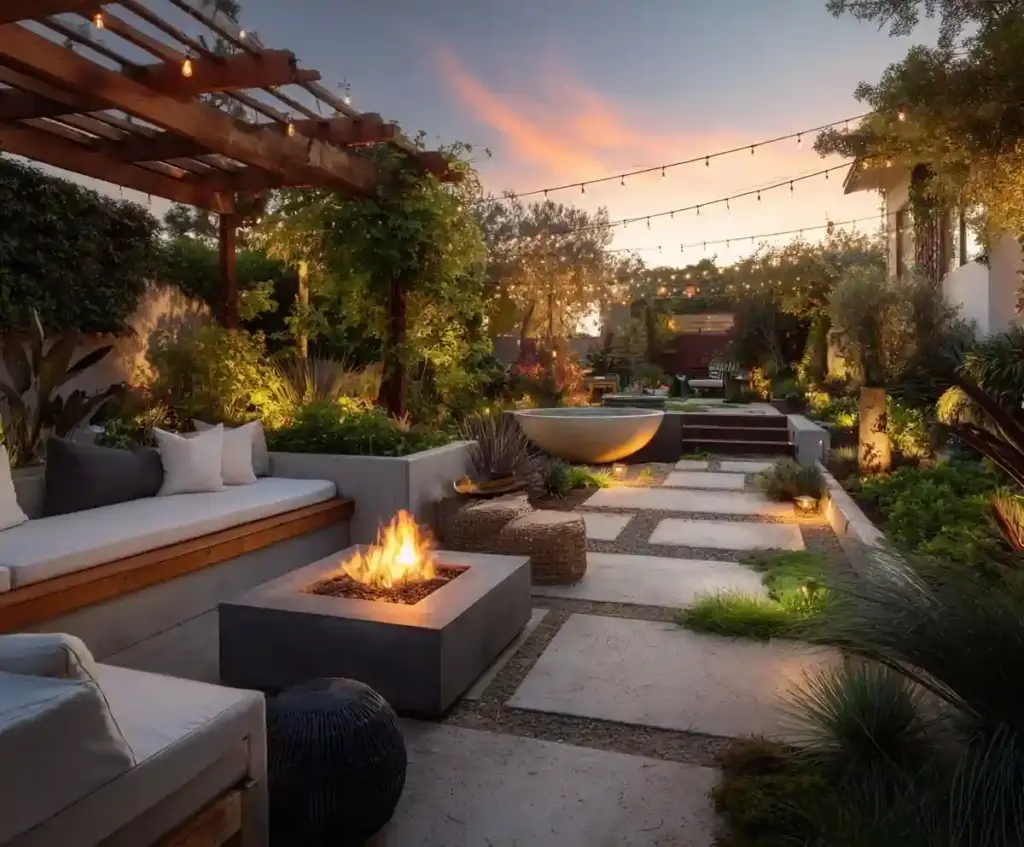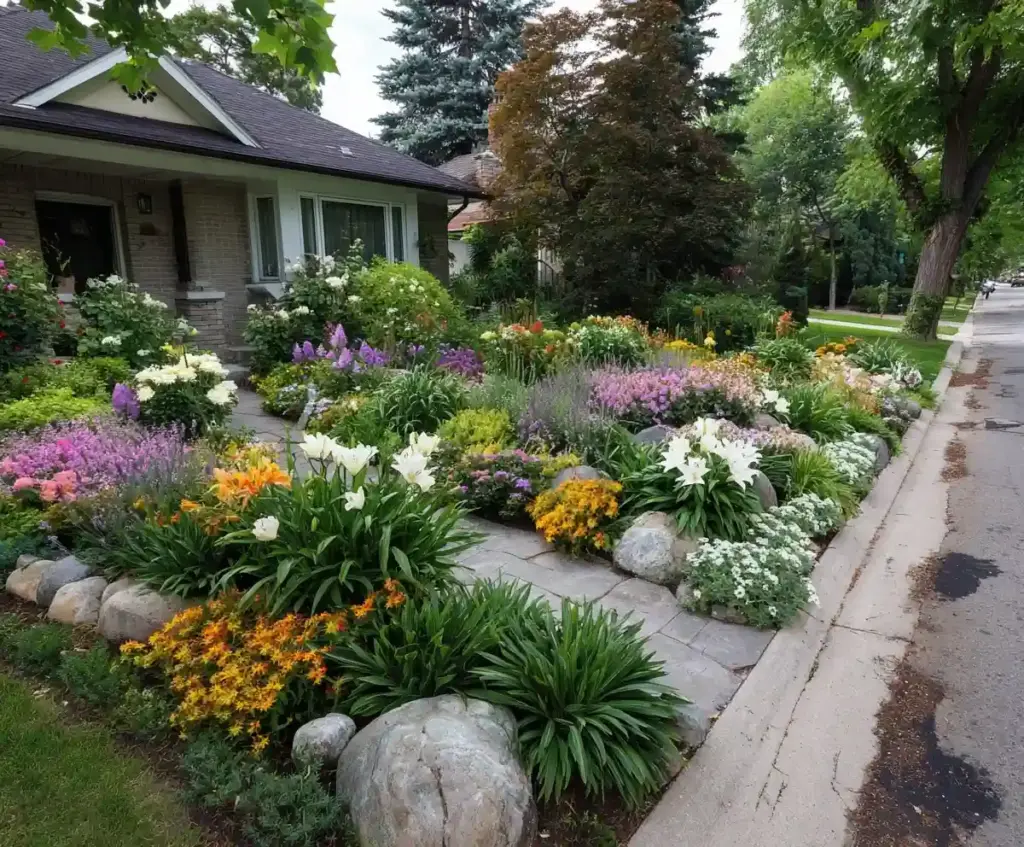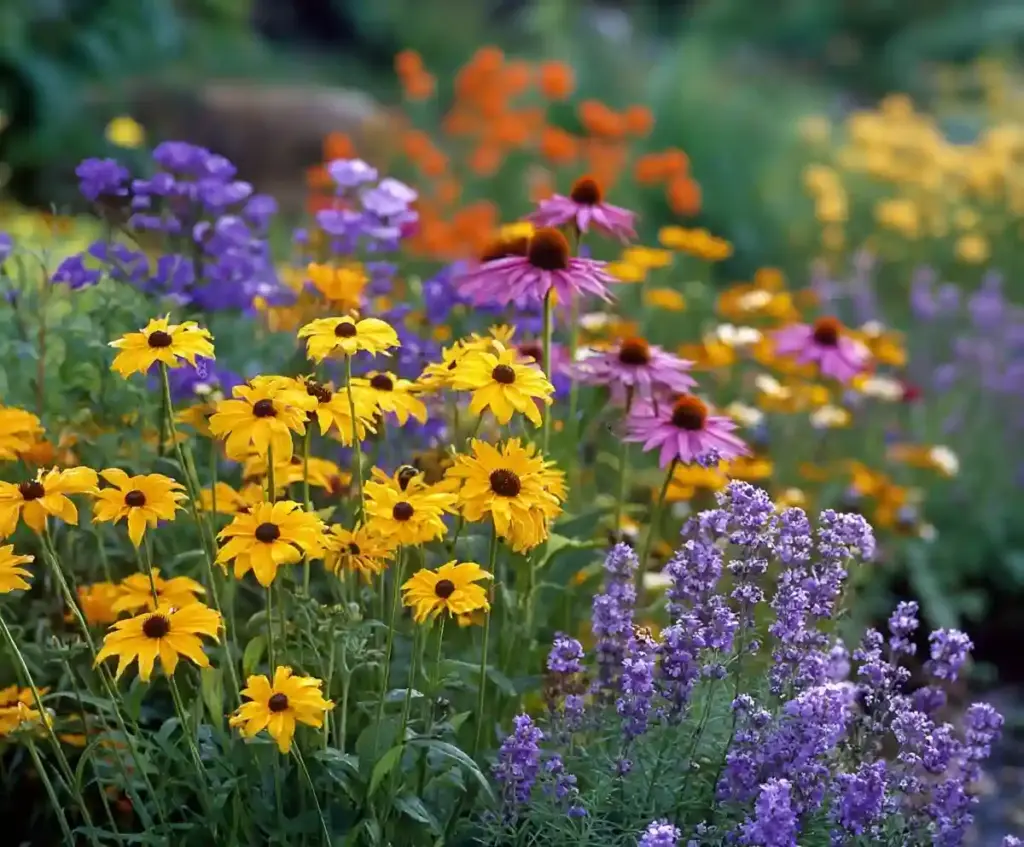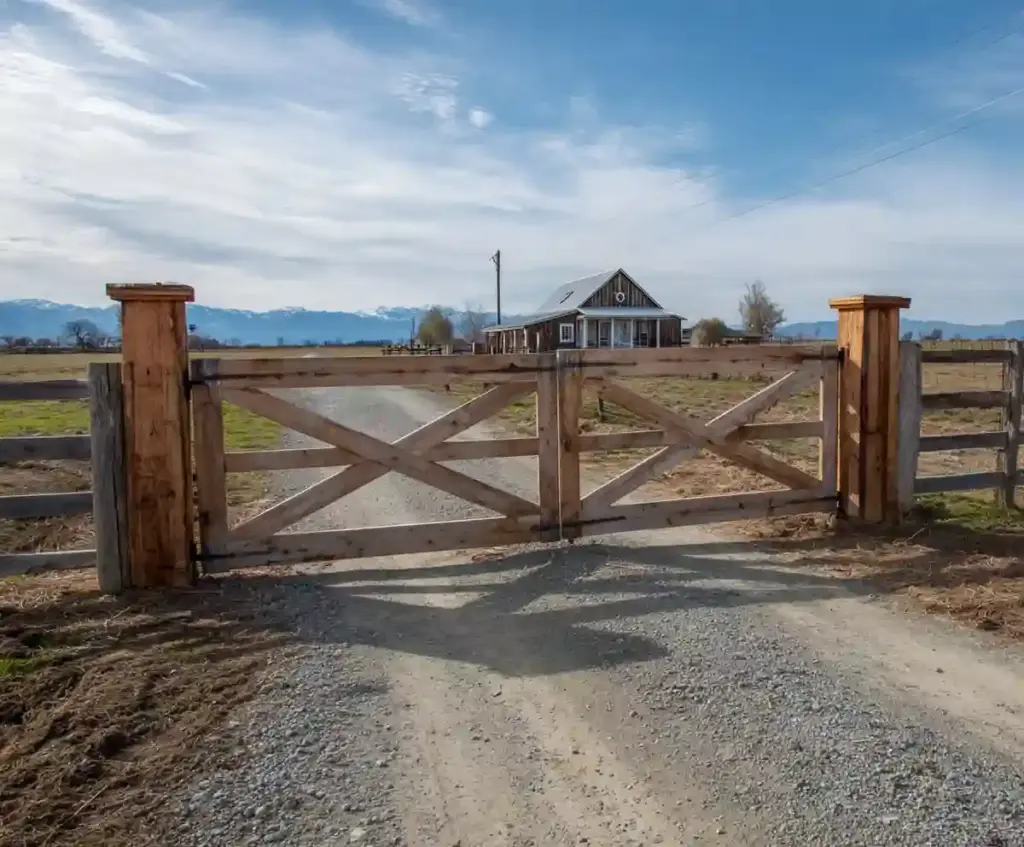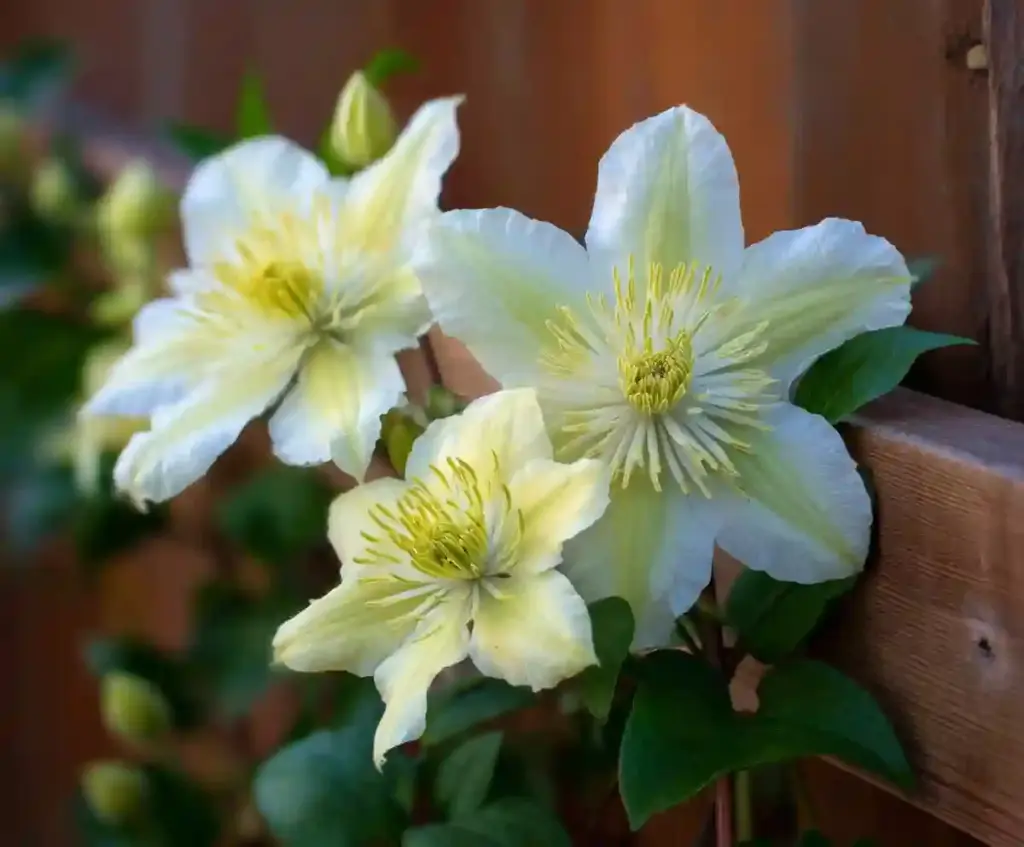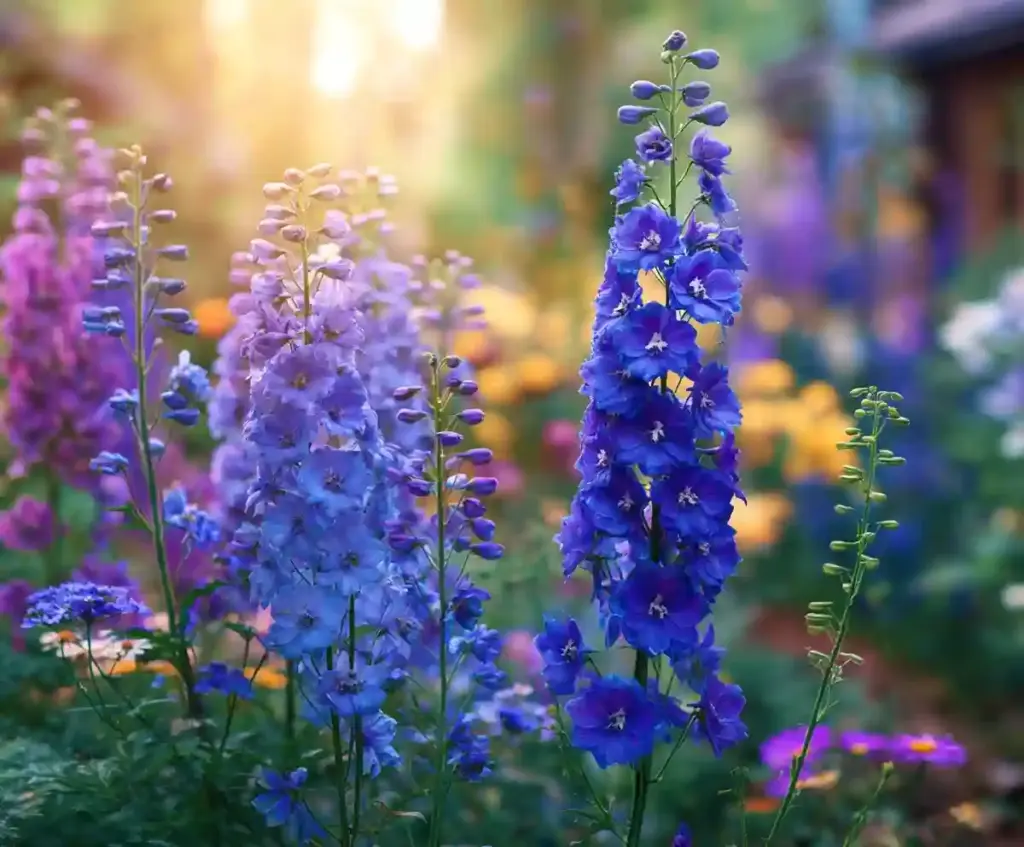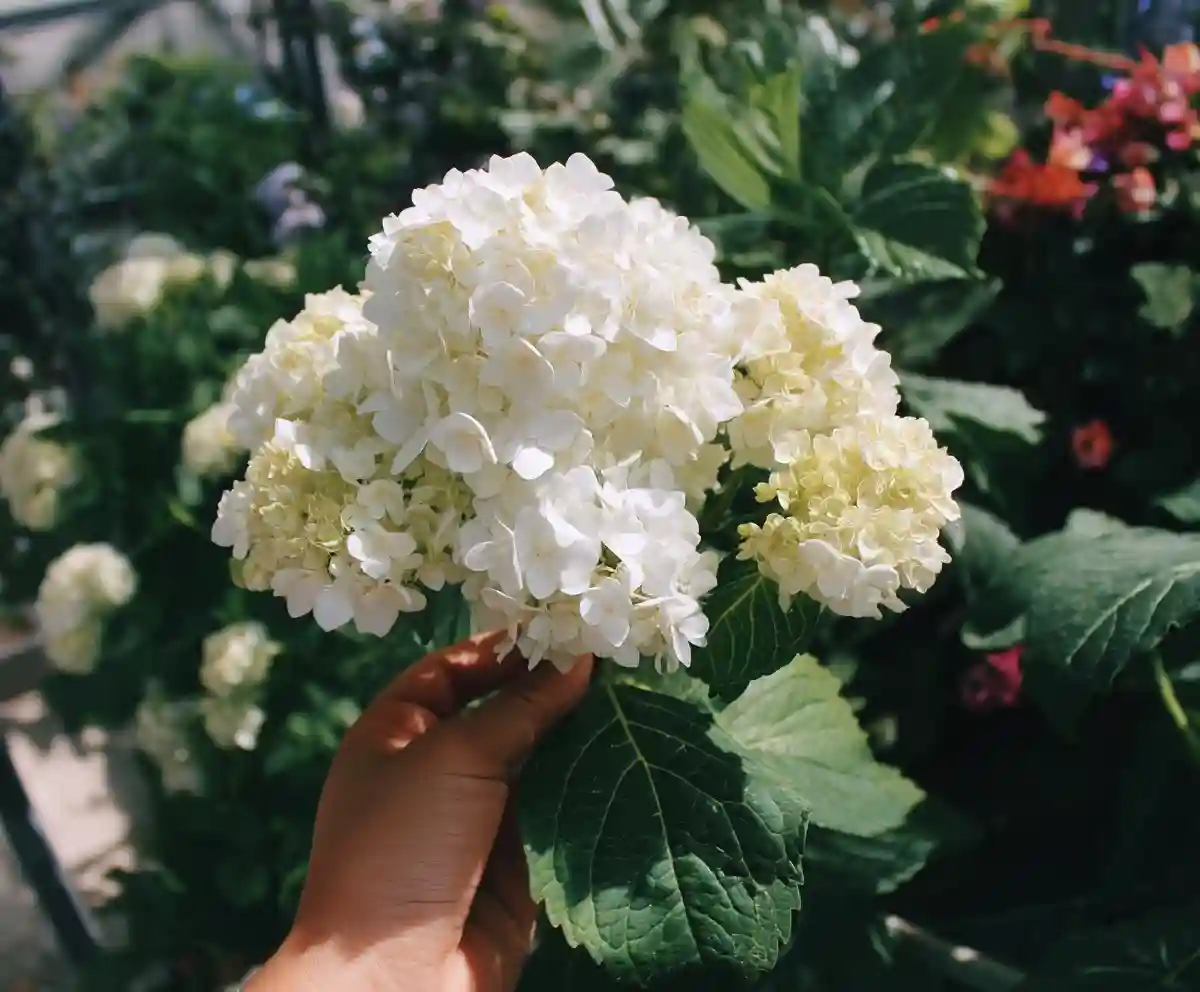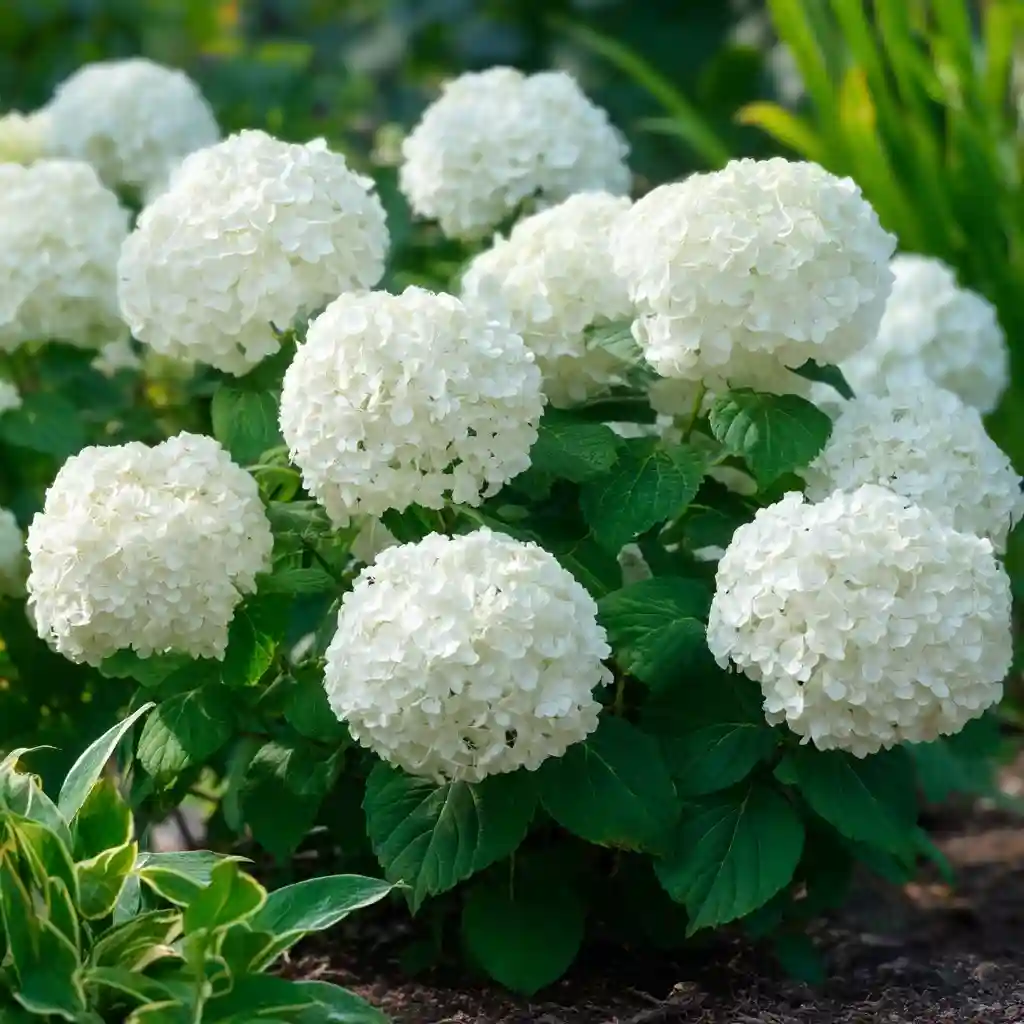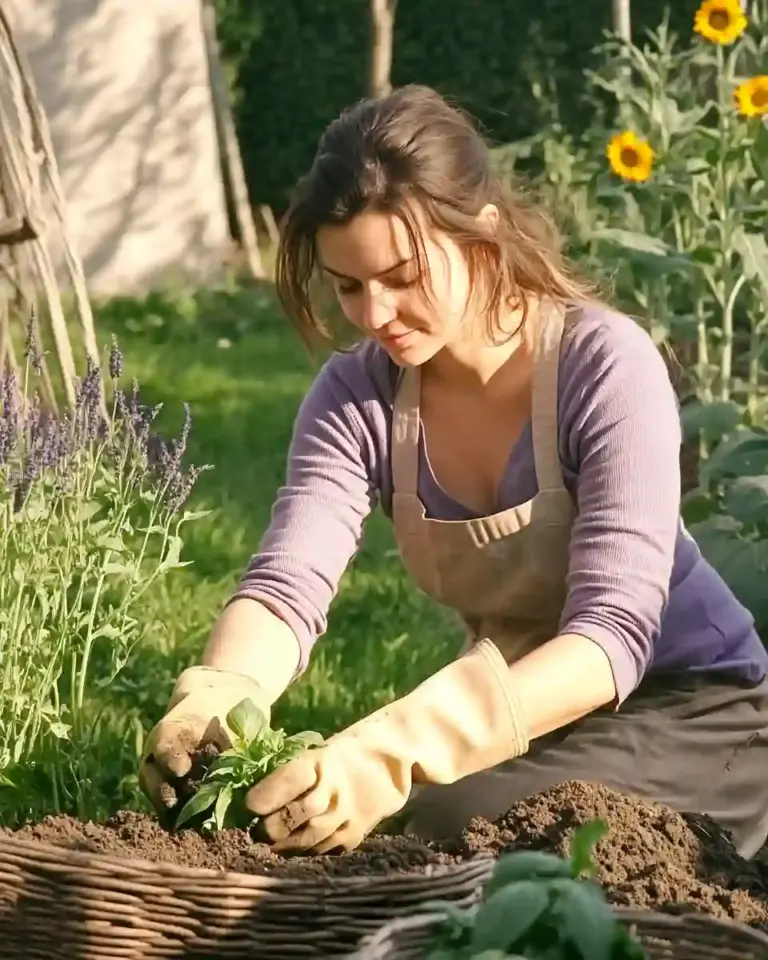Best white hydrangea varieties bring a timeless charm to gardens, blending effortlessly into cottage borders, shady nooks, or modern landscapes. Their crisp, clean blooms glow like pearls against rich foliage and offer season-long interest—some flowering from spring into late fall. Whether you’re looking for classic mopheads, lacecaps, or bold panicles, white hydrangeas provide versatility, structure, and serene beauty.
Choosing the right variety isn’t just about flower shape or size—it’s also about matching sunlight, soil, and maintenance needs. From towering climbers to compact container-friendly shrubs, there’s a white hydrangea to suit every space and style.
Let’s look at the most beautiful and garden-worthy varieties available today.
Table of Contents
1. ‘Annabelle’ Smooth Hydrangea (Hydrangea arborescens ‘Annabelle’)
Among the best white hydrangea varieties, ‘Annabelle’ remains a timeless favorite—and for good reason. This classic smooth hydrangea produces massive, snowball-like flower heads that reach up to 12 inches across. These blooms start pale green in early summer, mature into pure white, and gently fade back to green by fall, creating months of visual appeal.
Despite the grandeur of its blossoms, ‘Annabelle’ grows as a compact shrub, making it perfect for smaller gardens or foundation plantings. It also boasts lush green foliage that resists pests and disease better than many hydrangea types.
- Hardiness: USDA zones 3–8
- Light needs: Full sun to partial shade
- Mature size: 3–5 feet tall, 4–6 feet wide
- Bloom season: Early summer to mid-fall
- Soil needs: Moist, well-draining soil; tolerates slightly alkaline conditions
Plant ‘Annabelle’ in groupings to create a soft hedge, or let it shine solo as a flowering focal point in beds and borders.
2. ‘Onyx Zebra’ Hydrangea (Hydrangea macrophylla ‘Onyx Zebra’)
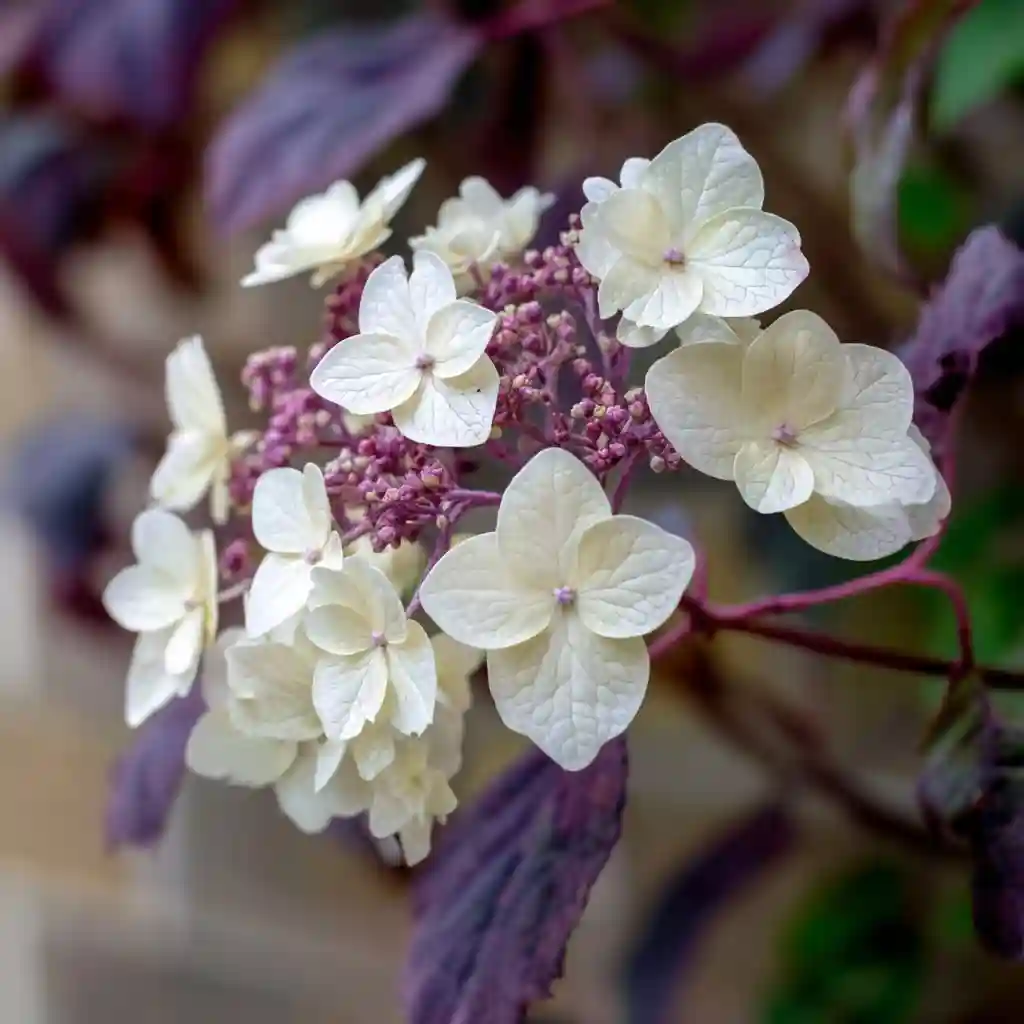
Striking contrast defines the best white hydrangea varieties, and ‘Onyx Zebra’ delivers exactly that. Its large, ivory-white blooms are paired with deep purple-black stems and rich green foliage, giving this variety a bold and elegant presence in any garden.
The flower heads are rounded and full, with broad, slightly frilled petals that resemble the texture of delicate wedding lace. This visual drama makes ‘Onyx Zebra’ ideal for ornamental borders, foundation plantings, or container displays.
What sets it apart is not just the bloom, but the dramatic foliage and stem coloration that enhances the brilliance of the white flowers—especially in partial shade where contrast pops.
- Hardiness: USDA zones 5–9
- Light needs: Full sun to partial shade
- Mature size: 4–5 feet tall, 1–2 feet wide
- Bloom season: Early summer to early fall
- Soil needs: Humus-rich, well-draining soil; mildly acidic to mildly alkaline
‘Onyx Zebra’ works beautifully in monochrome planting schemes or as a statement plant against darker backgrounds like mulch, stone, or fencing.
3. ‘Lanarth White’ Lacecap Hydrangea (Hydrangea macrophylla ‘Lanarth White’)
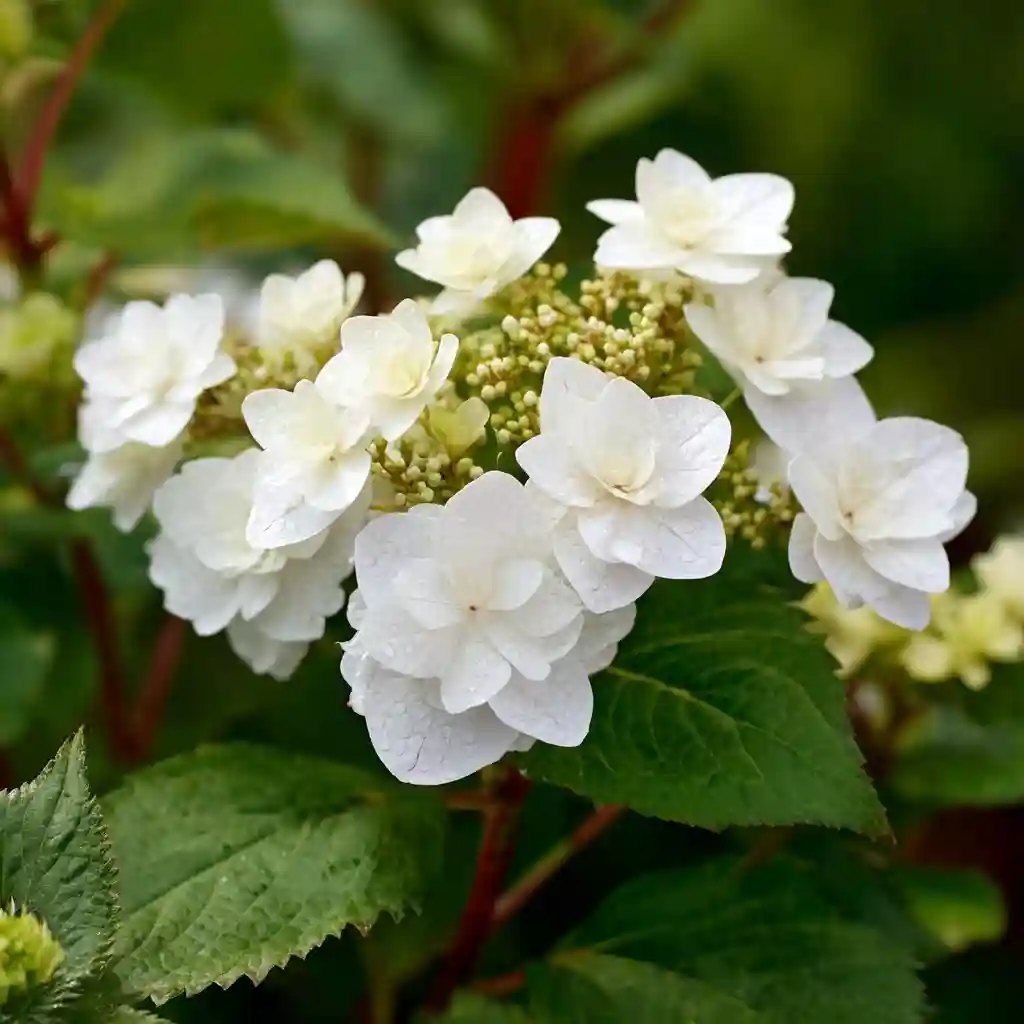
Refined and distinctive, ‘Lanarth White’ stands out among the best white hydrangea varieties thanks to its unique lacecap bloom style. Unlike ball-shaped hydrangeas, this cultivar produces flat flower heads with two types of blossoms: tiny fertile ones in soft mauve or blue hues at the center, surrounded by large, star-shaped white sterile flowers.
This dual-layer display creates a soft, airy effect that feels both romantic and wild. The shrub itself is compact and tidy, with semi-glossy green leaves and an elegant form that fits beautifully in coastal gardens, containers, or cottage-style borders.
Its salt tolerance makes it a smart pick for seaside gardeners seeking structure and seasonal charm.
- Hardiness: USDA zones 6–9
- Light needs: Partial shade preferred; tolerates full sun
- Mature size: 4–5 feet tall and wide
- Bloom season: Early summer to early fall
- Soil needs: Organically rich, well-drained soil; mildly acidic to neutral
‘Lanarth White’ adds grace and texture to mixed plantings and pairs well with soft-colored perennials or ornamental grasses.
4. Oakleaf Hydrangea (Hydrangea quercifolia)
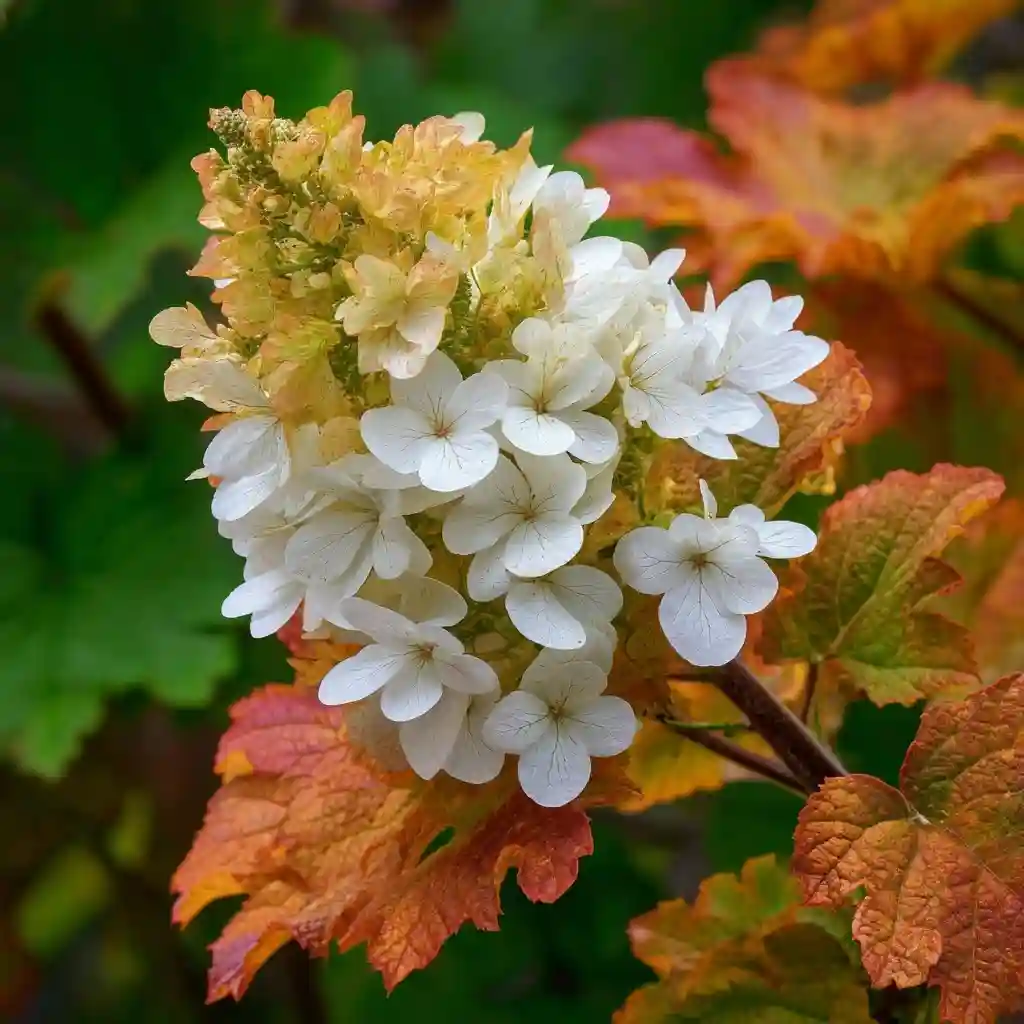
Among the best white hydrangea varieties, Oakleaf hydrangea offers more than just beautiful blooms—it brings year-round interest with bold foliage and striking seasonal color. Its deeply lobed leaves resemble those of oak trees, turning vibrant shades of red, orange, and purple in autumn.
The flowers appear in upright, cone-shaped panicles starting in late spring, initially creamy white and gradually aging to soft pink hues. These blooms can last well into winter, offering visual texture long after most other hydrangeas have faded.
Native to the southeastern United States, oakleaf hydrangea is a hardy, drought-tolerant shrub that thrives in naturalized gardens, woodland edges, and informal borders.
- Hardiness: USDA zones 5–9
- Light needs: Partial shade preferred; tolerates full sun
- Mature size: 6–8 feet tall and wide
- Bloom season: Late spring through winter
- Soil needs: Fertile, well-drained soil; mildly acidic to neutral
This variety adds structure and drama, making it a perfect backdrop or standalone accent in shaded garden areas.
5. Climbing Hydrangea (Hydrangea anomala subsp. petiolaris)
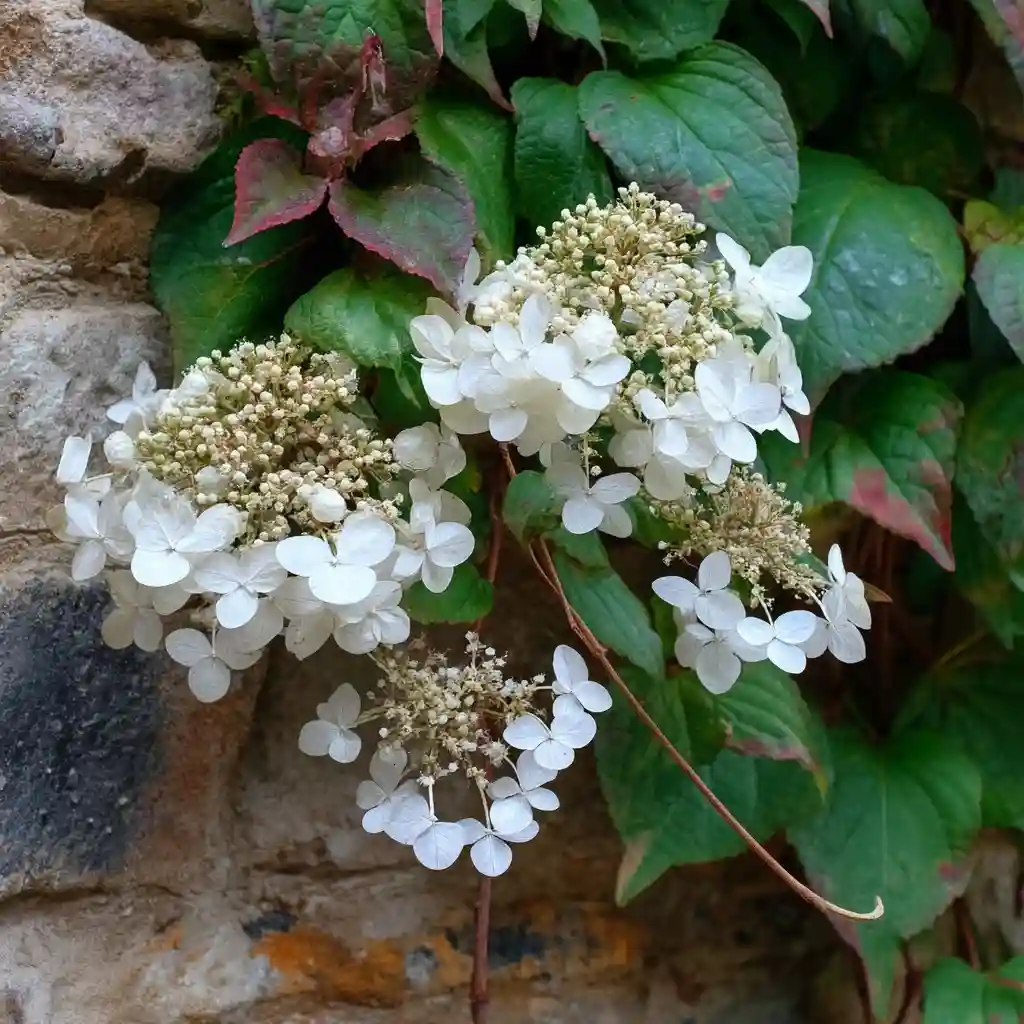
For gardeners looking to add vertical interest with the best white hydrangea varieties, Climbing hydrangea is an exceptional choice. This vigorous, deciduous vine uses aerial rootlets to cling to walls, arbors, and trellises, transforming vertical surfaces into cascading displays of fragrant, lace-like white blooms.
The flower clusters are large and airy, featuring a mix of tiny fertile florets and larger, sterile blossoms that create a “floating cloud” effect from late spring into early fall. Beyond the blooms, the textured bark peels to reveal a cinnamon-red layer, adding winter character.
Its deep green, heart-shaped leaves create a dense screen, making it a beautiful choice for privacy or as a living façade in shaded or woodland-style gardens.
- Hardiness: USDA zones 4–9
- Light needs: Full shade to full sun (prefers part shade)
- Mature size: 30–40 feet tall, 5–6 feet wide
- Bloom season: Late spring to early fall
- Soil needs: Moist, fertile, well-drained soil; mildly acidic to neutral
Climbing hydrangea adds romantic charm to fences, pergolas, and stone walls, and thrives even in cooler, low-light areas where other climbers struggle.
6. ‘Grandiflora’ Panicle Hydrangea (Hydrangea paniculata ‘Grandiflora’)
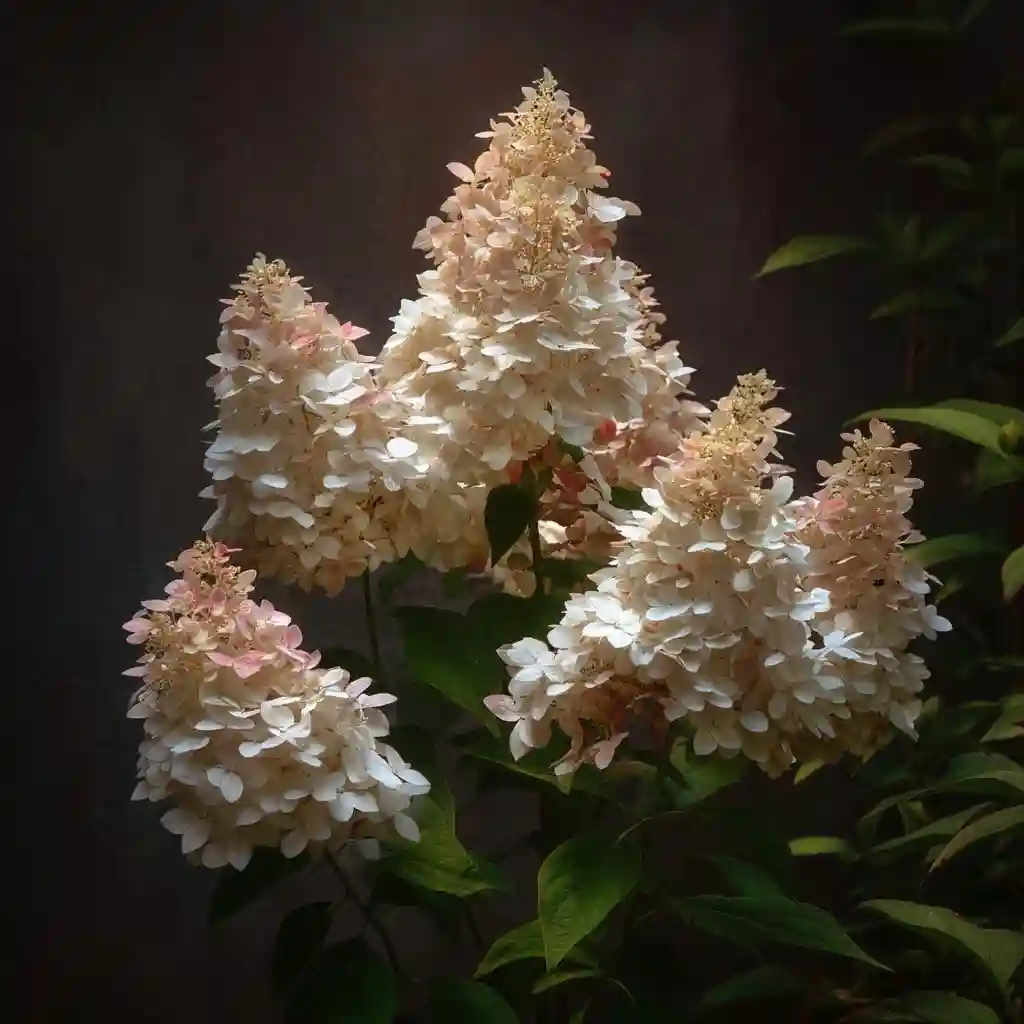
A true giant among the best white hydrangea varieties, ‘Grandiflora’—often called PeeGee Hydrangea—offers impressive size and structure. This cultivar can grow large enough to be trained into a small tree, with sturdy woody stems that support massive conical flower clusters up to 18 inches long.
The blooms begin as creamy white in mid-summer, sometimes developing subtle blushes of pink as they age. Its deep green leaves provide a lush backdrop that shifts to golden-yellow, red, or purple hues in fall, delivering four-season beauty.
Because of its durability and adaptability, ‘Grandiflora’ is ideal for urban settings, formal landscapes, and coastal gardens alike.
- Hardiness: USDA zones 3–8
- Light needs: Full sun to partial shade
- Mature size: 10–25 feet tall, 8–15 feet wide
- Bloom season: Mid-summer to early fall
- Soil needs: Rich, well-drained soil; mildly acidic to mildly alkaline; salt tolerant
Use ‘Grandiflora’ as a striking focal point, in large hedges, or to anchor mixed shrub borders where space allows for its majestic size.
7. ‘Incrediball’ Smooth Hydrangea (Hydrangea arborescens ‘Incrediball’)
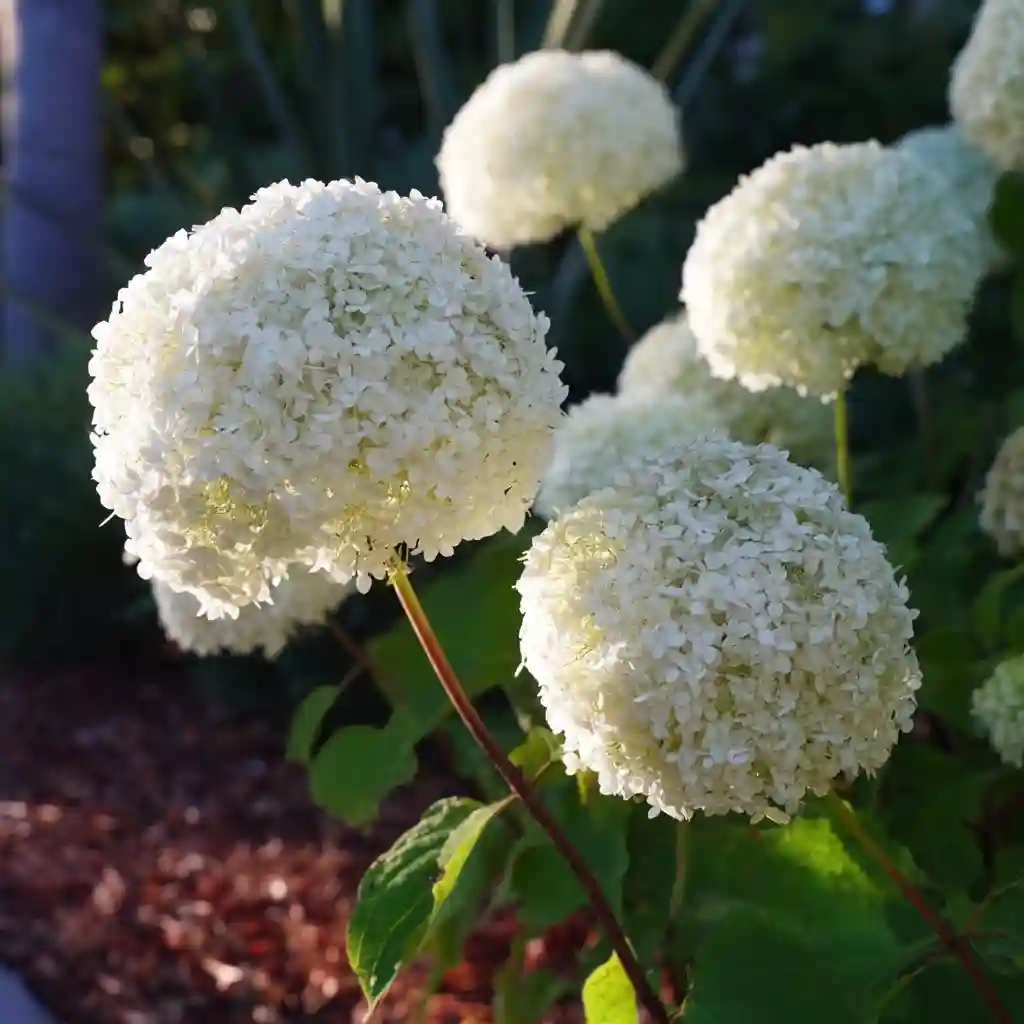
If you love bold blooms, ‘Incrediball’ is one of the best white hydrangea varieties you can grow. A modern twist on the classic ‘Annabelle’, this smooth hydrangea features enormous, nearly spherical flower heads that can reach up to 12 inches across—living up to its name.
The blooms emerge pale green in early summer, mature into brilliant white, and fade back to tan by fall, offering a multi-toned display over several months. What sets ‘Incrediball’ apart is its extra-strong stems, which keep the large flowers from flopping over—a common issue with older varieties.
This compact shrub’s tidy form and cold tolerance make it especially well-suited to northern climates and small-space gardens.
- Hardiness: USDA zones 3–8
- Light needs: Full sun to partial shade
- Mature size: 4–5 feet tall and wide
- Bloom season: Early summer to early fall
- Soil needs: Average, moist, well-drained soil; mildly acidic to neutral
Plant ‘Incrediball’ as a standout in mixed borders, or use it for foundation plantings where its showy flowers can shine without crowding nearby plants.
8. ‘Tardiva’ Panicle Hydrangea (Hydrangea paniculata ‘Tardiva’)
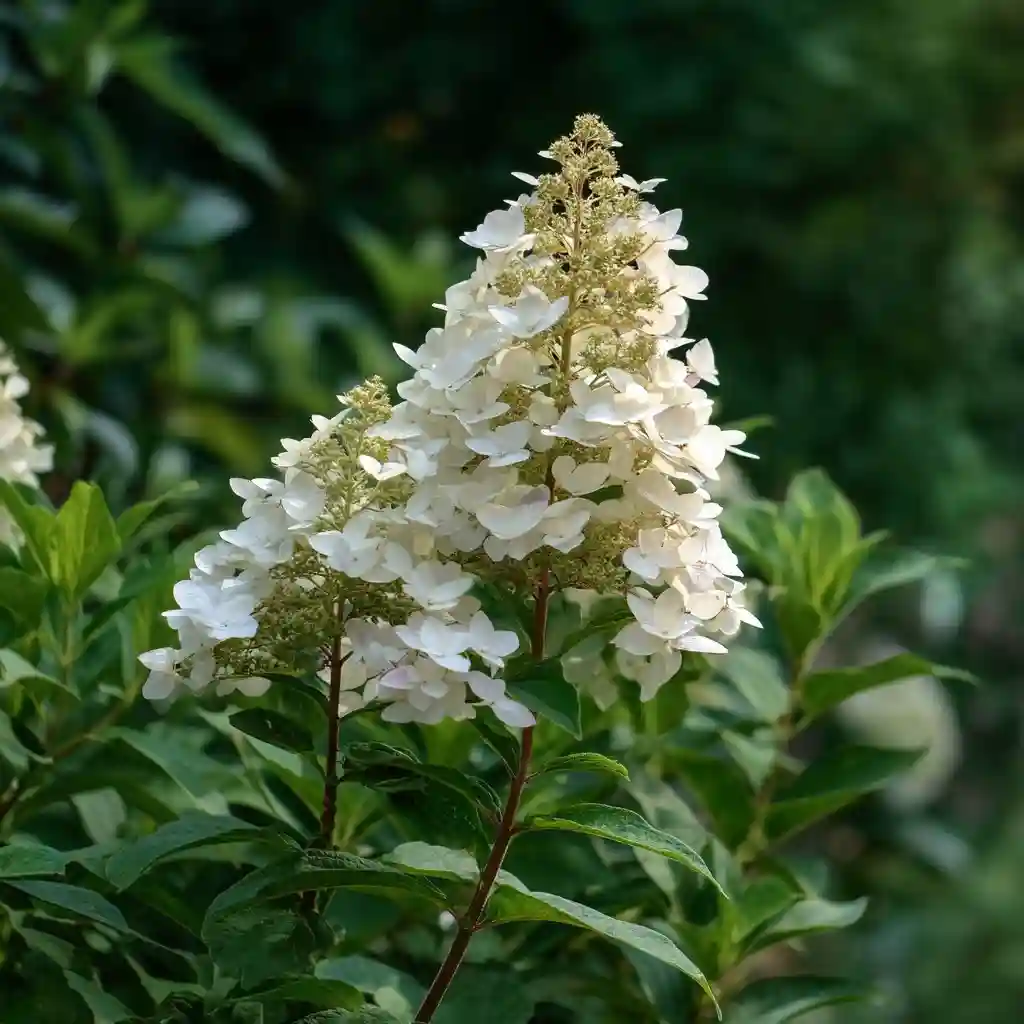
If you’re looking for late-season interest, ‘Tardiva’ stands out as one of the best white hydrangea varieties for extended bloom time. True to its name, this panicle hydrangea begins flowering in late summer—just as many other hydrangeas begin to fade—and continues well into mid-fall.
Its long, upright panicles feature a striking mix of small fertile flowers and large, snow-white sterile ones, forming a dynamic and elegant display. The blooms sit atop tall, sturdy stems and are complemented by deep green, semi-glossy leaves that take on golden and purplish tones as autumn sets in.
‘Tardiva’ is ideal for adding late-blooming beauty to mixed borders, cottage gardens, or foundation plantings where other plants may be past their peak.
- Hardiness: USDA zones 3–8
- Light needs: Full sun to partial shade
- Mature size: 8–12 feet tall, 7–10 feet wide
- Bloom season: Late summer to mid-fall
- Soil needs: Humus-rich, well-drained soil; mildly acidic to mildly alkaline; salt tolerant
Prune in winter or early spring to maintain its shape and maximize flower production.
9. ‘Beni-Gaku’ Mountain Hydrangea (Hydrangea serrata ‘Beni-Gaku’)
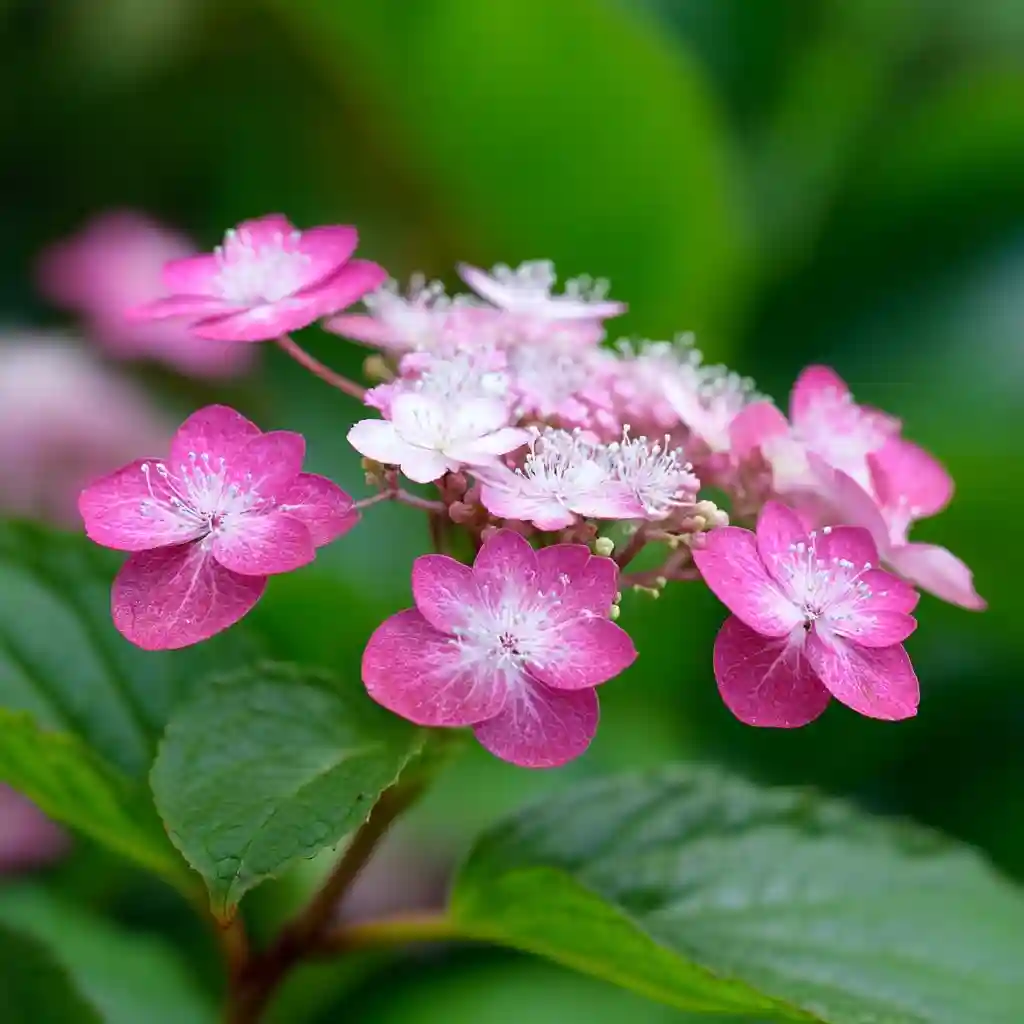
Delicate yet vibrant, ‘Beni-Gaku’ brings a unique twist to the best white hydrangea varieties, especially for those who enjoy multi-toned blooms. This mountain hydrangea features lacecap flower heads, where the outer sterile florets are crisp white, and the inner fertile flowers range in color from soft pink to deep violet-blue.
As the season progresses, the white outer blossoms often take on faint rose or blush tones, giving each cluster a watercolor-like effect. These blooms hover above long, arching stems, creating an airy, almost floating look.
Compact and colorful, ‘Beni-Gaku’ is well suited for containers, smaller gardens, and shaded beds where space is limited but charm is essential.
- Hardiness: USDA zones 5–9
- Light needs: Full sun to partial shade
- Mature size: 3–4 feet tall and wide
- Bloom season: Early to late summer
- Soil needs: Moist, well-drained, organically rich soil; mildly acidic to mildly alkaline
‘Beni-Gaku’ adds soft elegance and subtle color play to garden edges and patio pots, especially when paired with ferns or hostas.
10. ‘Gatsby Moon’ Oakleaf Hydrangea (Hydrangea quercifolia ‘Gatsby Moon’)
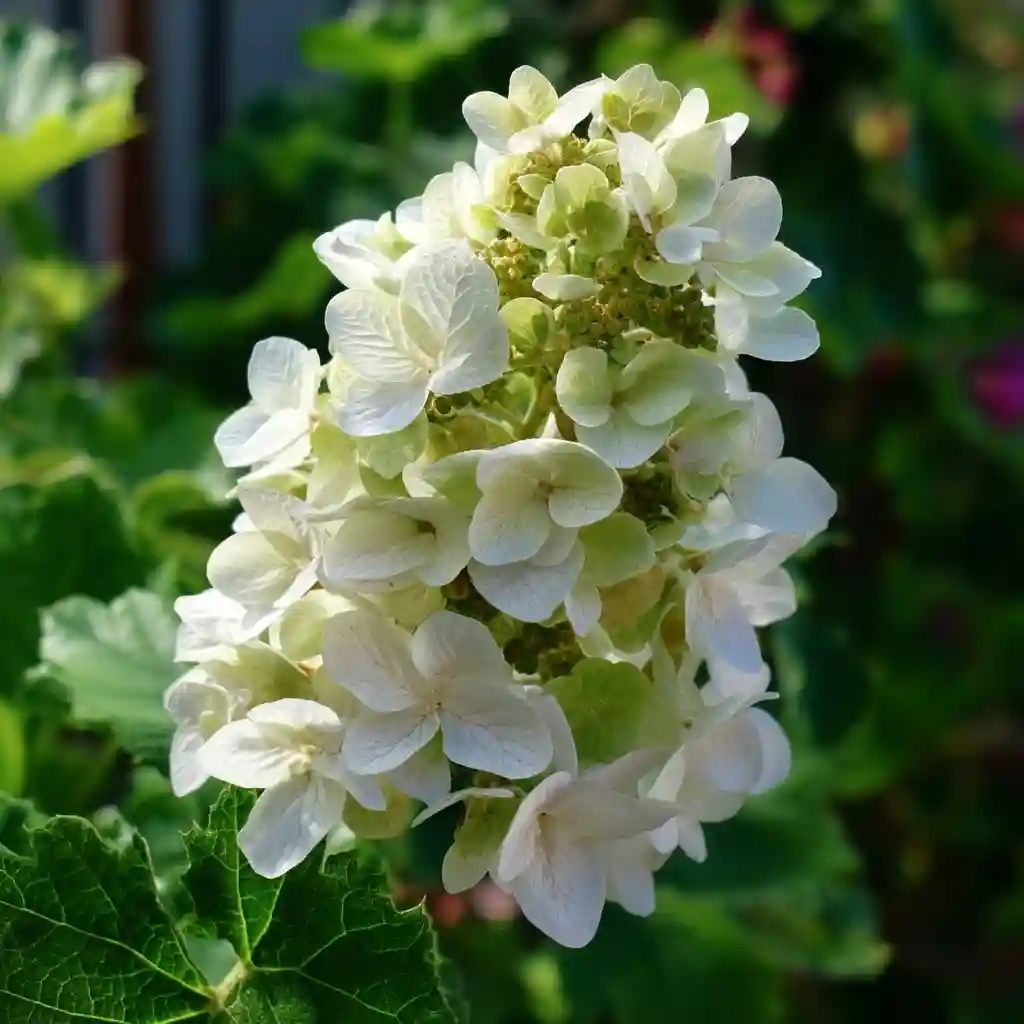
If you’re searching for density and drama, ‘Gatsby Moon’ is one of the best white hydrangea varieties to consider. This oakleaf hydrangea produces tightly packed, cone-shaped flower heads that can reach up to 12 inches long, resembling scoops of vanilla ice cream stacked in layers.
The blooms are pure white at first, with some taking on subtle hints of pale green as they age. What truly sets this variety apart is its long-lasting floral display—from early summer well into early fall—paired with showstopping fall foliage in rich tones of burgundy, plum, and red.
With a medium-sized, rounded habit and deep green, deeply lobed leaves, ‘Gatsby Moon’ is perfect for mixed borders or as a showpiece in more naturalized landscapes.
- Hardiness: USDA zones 5–9
- Light needs: Partial shade preferred; tolerates full sun
- Mature size: 6–10 feet tall and wide
- Bloom season: Early summer to early fall
- Soil needs: Fertile, well-drained soil; mildly acidic to neutral
This variety is also excellent for dried arrangements, making it a garden-to-vase favorite.
11. ‘Snow Queen’ Oakleaf Hydrangea (Hydrangea quercifolia ‘Snow Queen’)
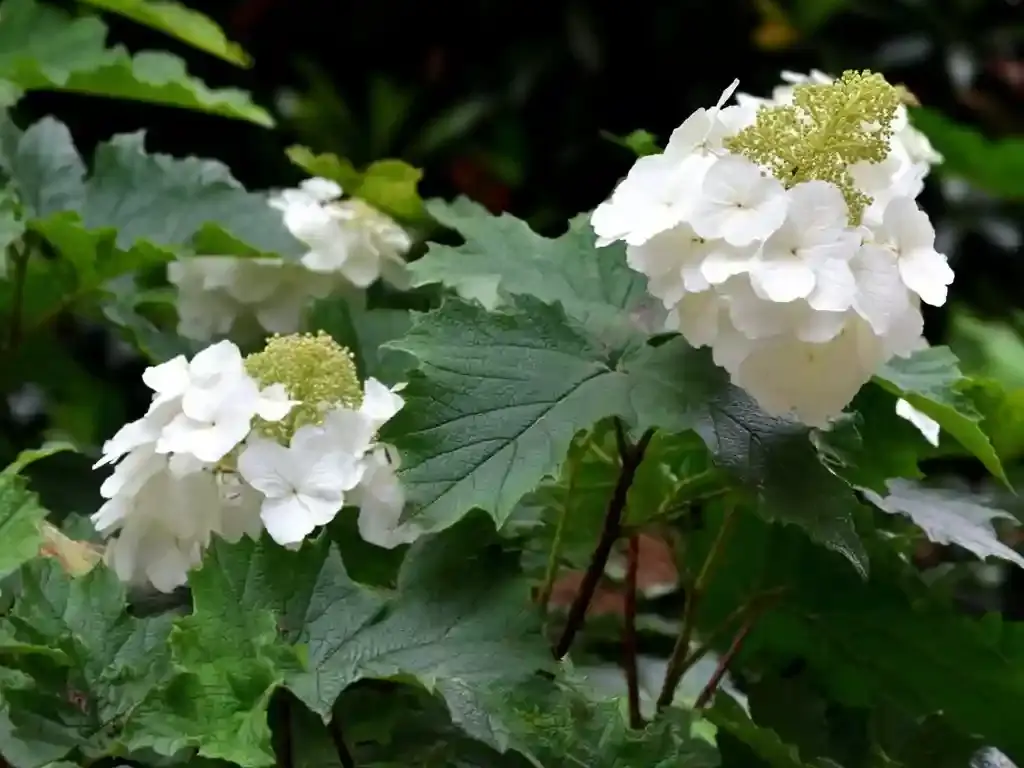
Elegant and dependable, ‘Snow Queen’ earns its place among the best white hydrangea varieties for its refined appearance and reliable performance. This oakleaf cultivar blooms earlier than most, producing conical flower heads in late spring that extend the blooming season well into summer.
The flower clusters, about 8 inches long, start as soft green buds and open into pure white blossoms. As fall approaches, they develop gentle rosy undertones. Its deeply lobed, semi-glossy green leaves turn dramatic shades of red, plum, and purple by autumn, enhancing its ornamental value.
Award-winning and native to North America, ‘Snow Queen’ thrives in informal garden beds, shady borders, or as a striking backdrop plant.
- Hardiness: USDA zones 5–9
- Light needs: Partial shade preferred; tolerates full sun
- Mature size: 4–6 feet tall, 6–8 feet wide
- Bloom season: Early summer to early fall
- Soil needs: Moist, fertile, well-drained soil; mildly acidic to mildly alkaline
‘Snow Queen’ is ideal for gardeners who want a soft, old-world touch with lasting visual interest throughout the year.
12. ‘Snowflake’ Oakleaf Hydrangea (Hydrangea quercifolia ‘Snowflake’)
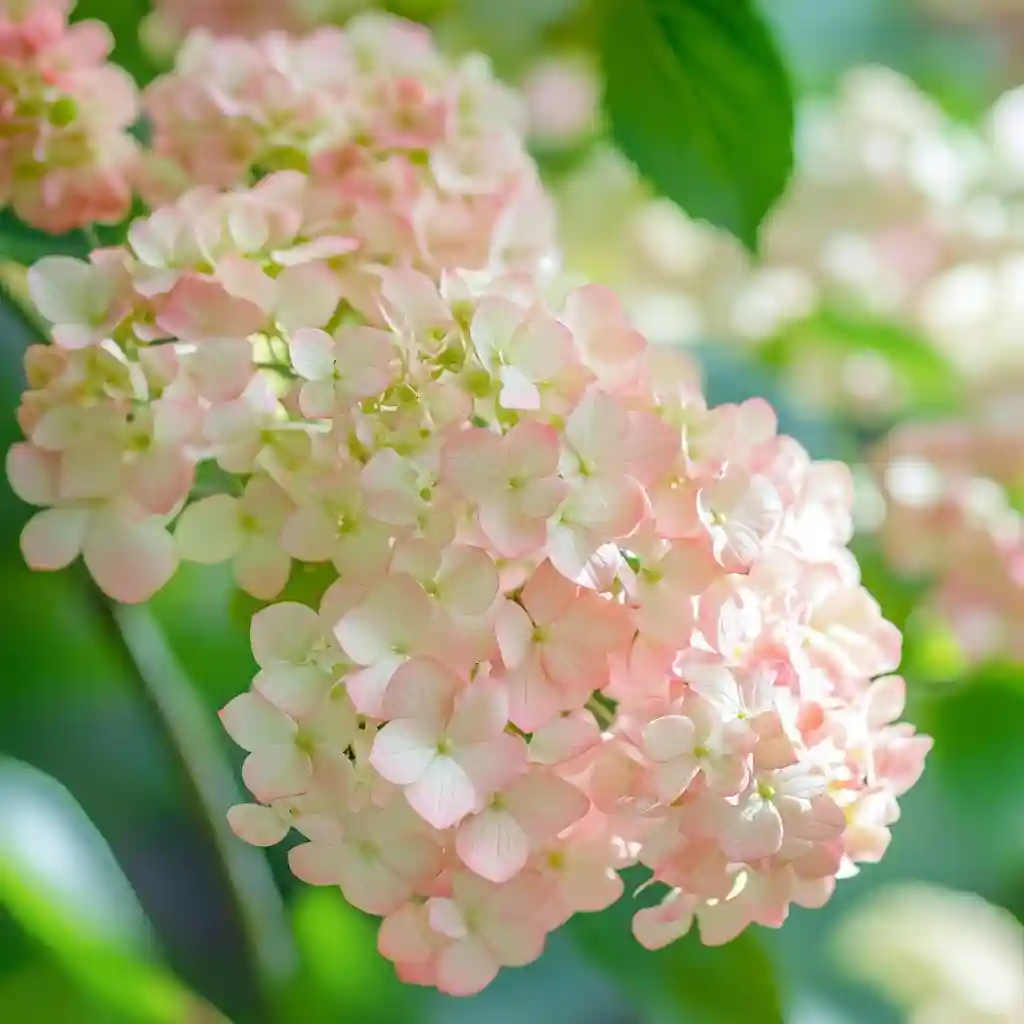
If you’re after layered texture and standout blooms, ‘Snowflake’ is one of the best white hydrangea varieties to grow. This oakleaf cultivar features striking double-petaled flowers that resemble stacked pagoda rooftops, creating full, fluffy panicles up to 12 inches long.
The blossoms open cream-white in late spring and gradually take on soft blush and pale green hues as they mature. Though its flowering period is slightly shorter than some others, the foliage more than makes up for it. Deeply lobed green leaves transition into fiery reds and purples in fall, making ‘Snowflake’ a four-season beauty.
It’s a favorite for mass plantings, shade gardens, or as a bold standalone specimen in informal landscapes.
- Hardiness: USDA zones 5–9
- Light needs: Partial shade preferred; tolerates full sun
- Mature size: 6–10 feet tall and wide
- Bloom season: Late spring to mid-summer
- Soil needs: Fertile, well-drained soil; mildly acidic to neutral
‘Snowflake’ is also a superb choice for floral arrangements, offering texture and longevity both fresh and dried.
Conclusion
Whether you’re designing a serene all-white garden or looking to balance vibrant colors with cool-toned companions, the best white hydrangea varieties offer unmatched versatility, elegance, and bloom power. From massive mopheads like ‘Incrediball’ to refined lacecaps like ‘Lanarth White’ and architectural climbers like Hydrangea petiolaris, there’s a perfect fit for every space and style.
White hydrangeas don’t just fill a garden—they elevate it. With options that suit small spaces, large landscapes, shady nooks, and sunny borders, these timeless plants are ready to transform your garden from ordinary to extraordinary.
FAQ
What’s the easiest white hydrangea variety to grow?
‘Annabelle’ is one of the easiest and most beginner-friendly varieties. It’s hardy, blooms reliably, and adapts to a wide range of soils and light conditions.
Can white hydrangeas change color like pink or blue ones?
Most white varieties stay white regardless of soil pH. However, some like ‘Beni-Gaku’ may develop soft blush tones or pastel accents as the flowers mature.
Do white hydrangeas need full sun?
Most white hydrangeas prefer partial shade, especially in hotter climates. Varieties like ‘Grandiflora’ and ‘Incrediball’ tolerate more sun, provided the soil stays evenly moist.
Are there white hydrangeas for small gardens?
Yes! Compact options like ‘Beni-Gaku’, ‘Lanarth White’, and ‘Incrediball’ are perfect for containers, patios, and tight garden spaces.
🌿 Love gardening inspiration? Follow me on Pinterest for bold plant ideas, tips, and seasonal color!
More Posts
